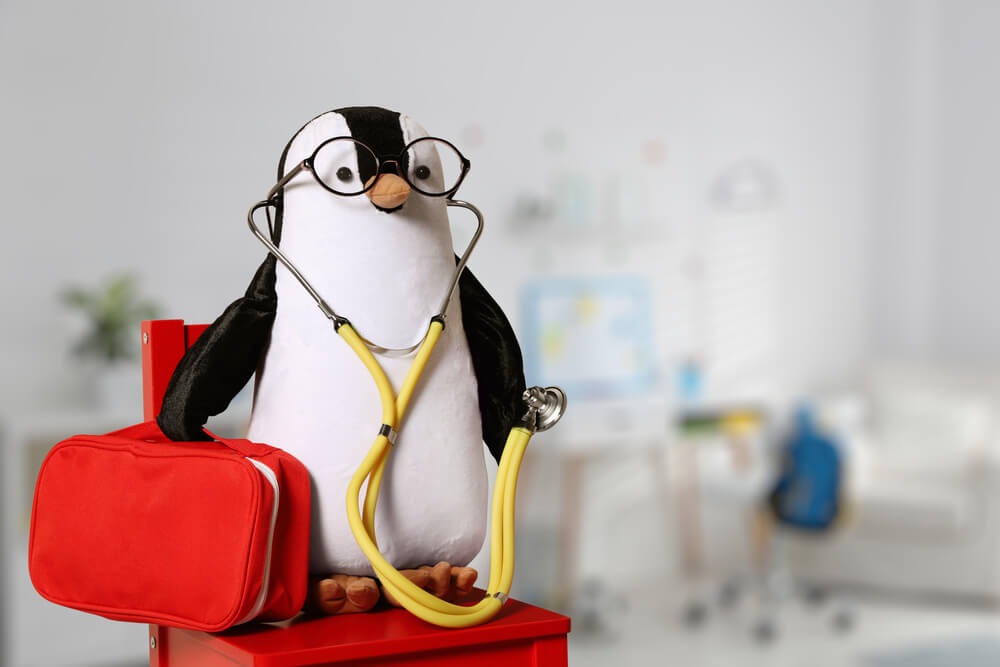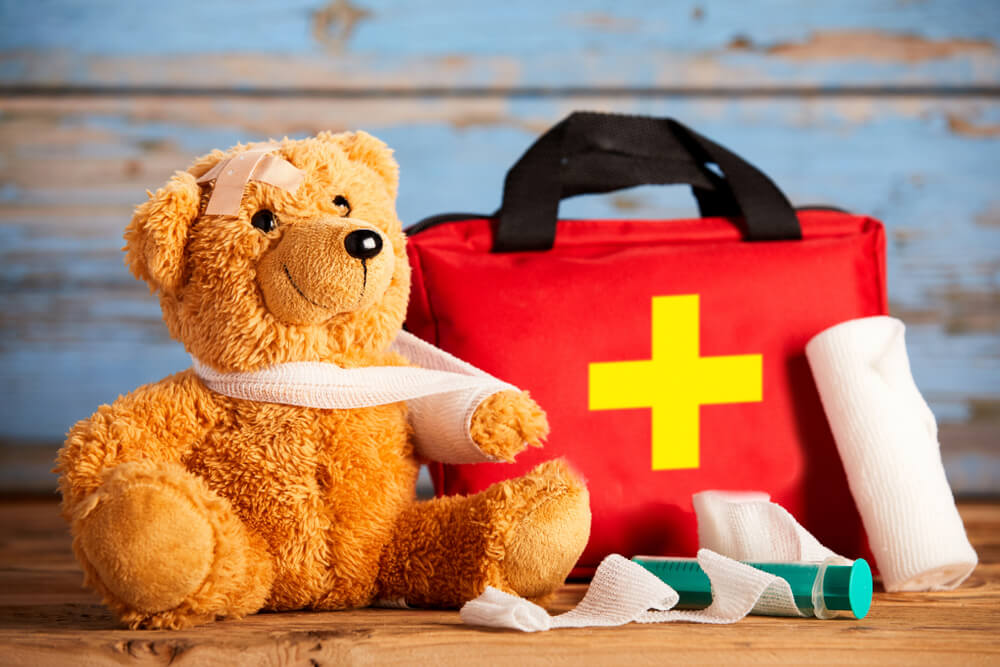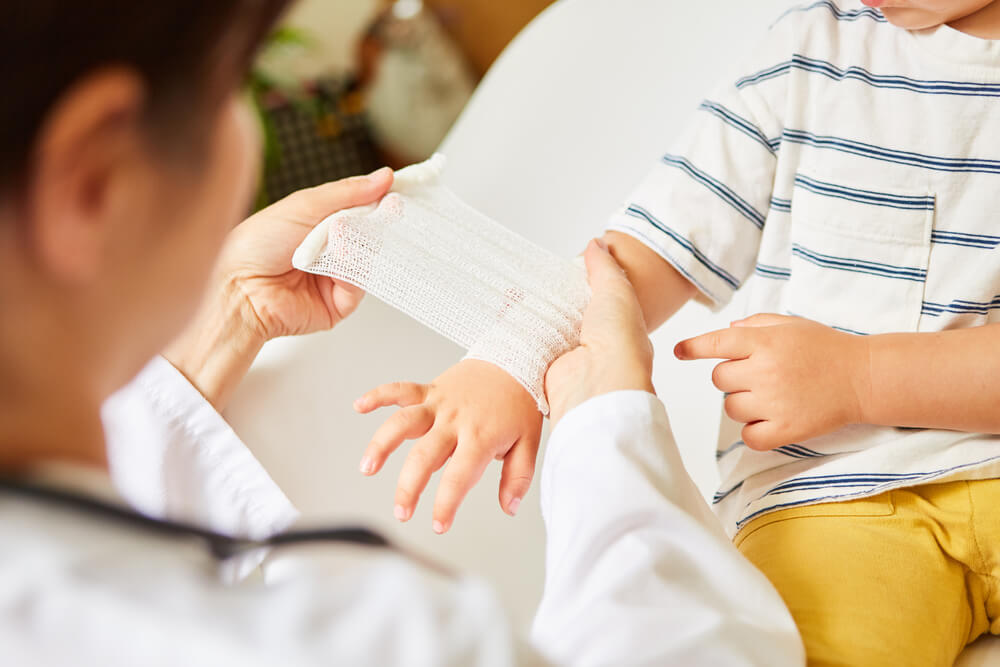Childhood accidents are prone to happen. Sometimes, things might even look terrifying, especially from the parent’s point of view. Still, fortunately, there are several steps they can take to handle burns, bumps, twisted ankles, and even nosebleeds like a professional.
Still, this doesn’t mean that you sometimes won’t need to assess an expert. If a more severe injury occurs, pediatric emergency care is a must. If those cases happen, the expert team at the Children’s Medical Center of South Florida is ready to help both you and your child.
Basic First Aid For Kids

From the second your child manages to take their very first step alone, they are bound to encounter at least one or two childhood accidents. Unfortunately, preventing these injuries is almost impossible, but with these first-aid tips, parents can be more prepared if something happens.
First Aid Tip No. 1: Get Yourself Organized
To get started on the right page regarding first aid for kids, you can get started by printing a list of your child’s allergies, medications, and other underlying conditions and stapling it to a copy of their immunization records. Ensure you carry one copy in your bag, while the other can be at home. To be safe, have a photo of the list and records with you on your phone.
Also, you can update any emergency phone numbers if needed, like your child’s pharmacist, regular doctor, and specialists, in case you need to contact them quickly.
First Aid For Kids: Easing The Pain
Now that we have the logistics out of the way, let’s start with monetary pain management. Fortunately, there are several things parents can do to ease the pain when childhood accidents happen. Below are some of the most popular doctor-approved methods for stocking your first-aid kit, patching up wounds, and calming your child.
Treating Head Bumps
A bag of frozen vegetables or an ice pack wrapped in a thin towel held against the swollen area can do wonders, along with offering some acetaminophen to manage the pain.
Keep an eye on your child, ensure they are their usual selves, and don’t exhibit any sudden behavioral changes or other symptoms.
Also, first aid for kids following a concussion will eventually include rest, no matter how minor the injury was. Also, avoid giving ibuprofen to your child as it can increase bleeding, which can be a severe problem if there are potential risks of brain injury.
Lastly, if you are concerned about the child’s symptoms and behavior, take them to their pediatrician or an emergency room. You should also call 911 if your child is unconscious or if they experience blurred or double vision, nausea, vomiting, confusion, dizziness, or numbness.
Treating Bad Cuts
Cut wounds should be flushed with soap and tap water and treated with antibiotic ointments before applying a bandage. If there’s bleeding through the bandage, direct pressure should be applied for around 15 minutes.
The cut shouldn’t be cleaned with Betadine, hydrogen peroxide, or alcohol, and if the wound is gaping and gushing with blood, you should visit an emergency room.
Treating Nosebleeds
Your child should have their head tilted slightly forward, and you should grab a towel that you pinch tightly to their nose above the nasal bone. Treat the area with oxymetazoline hydrochloride-containing nasal decongestants to stop the bleeding quickly.
This head position should be held for around ten to fifteen minutes, and don’t allow the child to lean back and not let them blow their nose as the bleeding may start again. Consider getting medical assistance if the bleeding doesn’t stop within a half hour.
Treating a Twisted Ankle
Instruct your child to take a seat and raise their injured ankle above the level of their heart while placing an ice pack on it. Continue applying ice to the affected area for 15 minutes every hour over the next 48 hours. Additionally, you can consider using ibuprofen to alleviate pain and reduce swelling.
However, it’s essential to avoid using a heating pad or permitting your child to soak their foot in a warm bath during the initial 48-hour period. Heat can potentially exacerbate swelling and discomfort, which is not the desired outcome.
If your child experiences an inability to bear weight on the injured ankle or if it appears deformed, seek immediate medical assistance. Head to the emergency room or an urgent care center, as these symptoms may indicate a fracture or dislocation rather than a mere sprain, which typically involves severe stretching of the ligaments.
Treating Burns
If your child has suffered a burn injury, here are the things you should consider doing:
- Keep the area under a cool tap for around fifteen minutes to decrease inflammation, ease pain, and cool the skin.
- Repeat if necessary for the next two days, or use ice wrapped in towels.
- Use antibiotic ointments to improve skin cell regeneration and soothe the burn.
- You can give your child pain medication if they are in pain (ibuprofen or acetaminophen).
- Keep any blisters intact, as they can actually help prevent infection. Clean the blister with antibiotic ointment and change the bandage if it pops.
Also, avoid butter and vitamin E, as both can irritate the wound. Also, avoid placing ice directly in the burn as it may lead to tissue damage.
Lastly, get immediate help if the skin looks waxy, wet, splotchy, or very angry. These may signal severe burn wounds that require immediate medical attention. Chemical burns should also be addressed by medical professionals, and if the burns are on the ears, genitals, feet, hands, or face, also call an ambulance.
Emergency medical assistance is imperative when dealing with a burn that encompasses 10% or more of a child’s body surface area. This scale of burn injury is categorized as major and necessitates immediate professional medical intervention.
First Aid for Kids If They Are Choking

You can evaluate your child’s airway by initiating a conversation with them. If your child can respond using simple sounds, it serves as a positive sign that their airway remains open and unobstructed.
However, if your child cannot respond, it becomes imperative to take swift action. Either enlist the assistance of someone to call 911 or personally dial emergency services while activating the speaker mode to ensure ongoing communication. Following this, you should proceed with the Heimlich maneuver:
- Embrace your child’s waist with your arms, forming a fist with one hand. Position the thumb side of your fist against their upper abdomen, just beneath the rib cage.
- Steady your fist with your other hand and perform brisk, upward thrusts until the obstructing item is expelled.
In the event of an infant or toddler, gently pick them up, place them facedown, and employ the heel of your hand to administer firm back blows between their shoulder blades.
It’s essential to be aware of actions to avoid:
- Do not respond forcefully.
- If your child is coughing but still able to speak, allow them to cough up the obstructive item naturally.
- Refrain from attempting to insert your fingers into their mouth or down their throat.
Seek immediate medical assistance if your child’s breathing appears abnormal or if they experience difficulty speaking normally following the incident. In such cases, it’s advisable to transport them to the emergency room. If your child becomes unresponsive at any point, always dial 911 for immediate assistance.
You Can Always Count On Us
Accidents can’t always be prevented, but most injuries can be handled effectively. If your child needs emergency care, you can always count on our help. Please schedule an appointment with us to learn more about our emergency care services.


